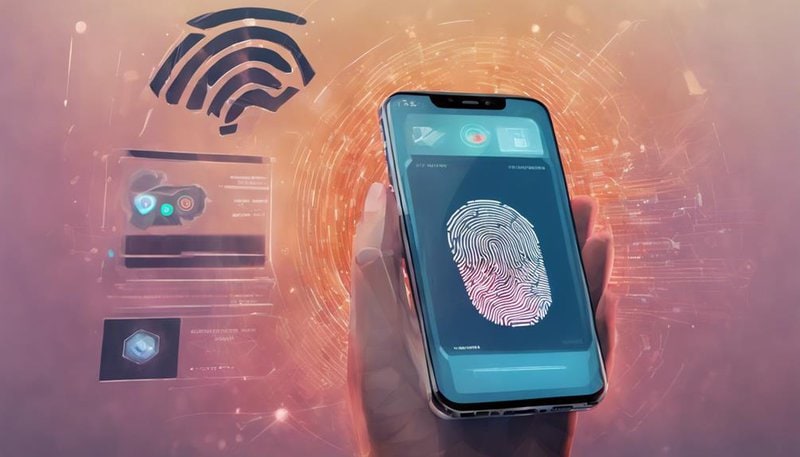Can Two-Factor Authentication Protect Your Crypto Assets?

Two-factor authentication (2FA) is an additional layer of security for accessing your accounts. It requires not only a password and username but also something that only the user has on them, i.e., a piece of information only they should know or have immediately to hand – such as a physical token. This significantly decreases the chance of unauthorized access, even if someone has your password.
By enabling 2FA on your cryptocurrency exchange accounts, you add an extra barrier that makes it much harder for hackers to gain access to your funds. This is particularly important in the world of cryptocurrencies, where transactions are irreversible and anonymity is valued. Therefore, using 2FA can help protect your valuable crypto assets from theft.
The Significance of Two-Factor Authentication
To safeguard your crypto assets effectively, implementing two-factor authentication is paramount in today's digital landscape. Security measures are crucial to protect your investments in the ever-evolving world of cryptocurrency. By adding an extra layer of security through two-factor authentication, you significantly reduce the risk of unauthorized access to your accounts. This process enhances identity verification by requiring not only something you know, like a password, but also something you possess, such as a mobile device.
In the realm of crypto assets, where the threat of cyber attacks looms large, taking proactive security measures is essential. Two-factor authentication acts as a robust shield against potential breaches, offering you peace of mind when managing your digital investments. By incorporating this additional layer of security, you fortify your defenses and make it significantly harder for malicious actors to compromise your accounts. Embrace the power of two-factor authentication to bolster your security posture and safeguard your crypto assets effectively.
Understanding How 2FA Works
Enhance your comprehension of how two-factor authentication (2FA) operates to fortify your security measures for safeguarding crypto assets effectively. Two-factor authentication (2FA) implementation involves adding an extra layer of security to your accounts beyond just a password. Typically, this second factor is something only the user has access to, like a code from a mobile app or a fingerprint scan. By requiring this additional step, 2FA significantly enhances security by making it harder for unauthorized users to access your accounts.
When it comes to 2FA best practices and industry standards, it's crucial to choose methods that offer a balance between security and user experience. Opt for authentication methods that are convenient for users while still providing a high level of security. Industry standards recommend using a combination of something you know (like a password) and something you have (like a mobile device) for the best protection. This approach ensures that even if your password is compromised, hackers would still need access to your secondary authentication method to gain entry.
Benefits of Implementing 2FA

Implementing two-factor authentication (2FA) empowers you to significantly elevate the security of your crypto assets. The security benefits of 2FA are paramount in safeguarding your valuable digital investments. By requiring a second form of verification, such as a code from your phone in addition to your password, 2FA adds an extra layer of protection against unauthorized access. This means that even if your password is compromised, hackers would still need the second factor to breach your accounts.
Moreover, 2FA not only enhances security but also offers user convenience. Despite the slight additional step of entering a verification code, the peace of mind and added security far outweigh this minor inconvenience. The minimal extra effort needed to verify your identity greatly reduces the risk of unauthorized access and potential loss of your crypto assets.
Ultimately, the benefits of implementing 2FA extend beyond just security – they provide a sense of control and assurance in safeguarding what matters most to you.
Risks and Limitations of 2FA
Considering the ever-evolving landscape of cybersecurity threats, it is crucial to understand the inherent risks and limitations associated with two-factor authentication (2FA) for safeguarding your crypto assets. While 2FA provides an extra layer of security beyond passwords, it is not immune to vulnerabilities. Here are some key points to consider:
| Security Risks | Authentication Vulnerabilities |
|---|---|
| Phishing attacks | Code interception |
| SIM swapping | Social engineering |
| Data breaches | Device theft |
| Malware | Biometric spoofing |
These security risks and authentication vulnerabilities highlight the importance of implementing 2FA correctly and being aware of potential threats. It's vital to choose reliable authentication methods, such as hardware tokens or biometrics, to mitigate these risks. Regularly updating your authentication settings and staying informed about emerging cyber threats are essential steps in enhancing the security of your crypto assets. Remember, staying vigilant and proactive is key to protecting your digital wealth.
Types of Two-Factor Authentication Methods

When it comes to securing your crypto assets, understanding the various types of two-factor authentication methods is crucial. Common methods include:
- SMS verification
- Authenticator apps
- Hardware tokens
Biometric authentication and time-based tokens are also effective ways to add an extra layer of security to your accounts.
Common 2FA Methods
Explore the diverse array of common 2FA methods to bolster the security of your crypto assets.
Hardware tokens provide a physical device that generates unique authentication codes, adding an extra layer of protection.
SMS codes deliver verification messages to your phone, requiring manual input for access.
Email verification involves confirming login attempts through a link or code sent to your email address.
Fingerprint recognition utilizes biometric data for quick and secure authentication.
By incorporating a combination of these methods, you can significantly enhance the security of your crypto holdings.
Stay proactive in safeguarding your assets by implementing these common 2FA strategies to mitigate the risk of unauthorized access and potential threats to your digital wealth.
Biometric Authentication
To enhance the security of your crypto assets, consider incorporating biometric authentication as part of your two-factor authentication methods. Biometric authentication utilizes unique physical characteristics to verify your identity, making it a robust security measure.
When it comes to biometric authentication, two common methods include:
- Voice recognition: Your voice is as unique as your fingerprint, making it a reliable biometric identifier.
- Fingerprint scanning: Utilizing your fingerprint adds an extra layer of security, as each fingerprint is distinct and can't be replicated easily.
Time-Based Tokens
Enhance the security of your crypto assets further by considering the implementation of time-based tokens as part of your two-factor authentication methods. Time-based tokens add an extra layer of security by generating unique codes that are only valid for a short period. This token generation process ensures that even if your password is compromised, unauthorized access is still prevented.
Incorporating time-based tokens into your authentication process strengthens security measures and safeguards your digital assets. Despite the added security, the user experience remains streamlined, with codes easily accessible through authentication apps or physical tokens.
Setting Up 2FA for Crypto Wallets

Consider implementing two-factor authentication (2FA) to enhance the security of your crypto wallet. When setting up 2FA for your crypto wallet, there are a few important steps to follow:
- Choose the Right 2FA Method: Opt for hardware wallets like Ledger or Trezor for an added layer of security. These physical devices store your private keys offline, making them less vulnerable to online attacks.
- Utilize Mobile Apps: Mobile apps like Google Authenticator or Authy provide a convenient way to generate 2FA codes on your smartphone. These apps can be used in conjunction with your crypto wallet for secure access.
- Backup Your 2FA Codes: It's crucial to keep a backup of your 2FA codes in a safe place. Consider writing them down on a piece of paper and storing it in a secure location, separate from your device.
- Regularly Review Security Settings: Periodically review and update your 2FA settings to ensure your crypto wallet remains protected. Stay vigilant against any suspicious activities or attempts to access your account without authorization.
Common Mistakes to Avoid With 2FA
Boost your security by steering clear of these common mistakes when setting up two-factor authentication (2FA) for your crypto assets. It's essential to implement stringent security measures to safeguard your valuable crypto assets effectively. Avoid these common pitfalls to ensure your two-factor authentication setup is robust and reliable:
| Common Mistakes | Description | Impact | Prevention Tips |
|---|---|---|---|
| Using a Weak Password | Using easily guessable passwords weakens your overall security. | Increased risk of unauthorized access. | Create strong, unique passwords. |
| Not Backing Up Codes | Failing to backup your 2FA codes can lead to lockout if your device is lost or reset. | Risk of losing access to your accounts. | Backup codes securely offline. |
| Sharing 2FA Codes | Sharing your 2FA codes compromises your security and defeats the purpose of 2FA. | Higher likelihood of unauthorized access. | Keep your codes confidential. |
Enhancing Security With Backup Options

For added security and peace of mind, it's prudent to explore backup options to ensure continuous access to your crypto assets in case of unforeseen events. Implementing robust backup strategies can significantly enhance the security of your investments.
Here are four backup options to consider:
- Hardware Wallet Backup: Store a backup of your hardware wallet in a secure location separate from the device itself. This ensures you can recover your assets even if the physical wallet is lost or damaged.
- Paper Wallet or Seed Phrase: Create a paper wallet or securely store your seed phrase offline. This provides a backup in case your primary access methods fail or are compromised.
- Multi-Signature Wallets: Utilize multi-signature wallets that require multiple private keys to authorize transactions. This adds an extra layer of security and redundancy.
- Cloud Backup Solutions: Consider encrypted cloud storage services to securely store copies of your wallet information. Make sure to use reputable providers and enable two-factor authentication for access.
Future Trends in 2FA for Cryptocurrency
To fortify the protection of your crypto assets and adapt to evolving security challenges, exploring future trends in two-factor authentication for cryptocurrency is paramount. As the digital landscape continues to advance, new security measures and authentication methods are emerging to safeguard your investments effectively.
One such trend is the integration of biometric authentication into 2FA systems. By incorporating unique biological traits like fingerprints, facial recognition, or iris scans, this approach adds an extra layer of security that's difficult for hackers to replicate.
Additionally, decentralized 2FA solutions are gaining momentum, allowing users to manage their authentication processes without relying on centralized entities that could be vulnerable to attacks. These decentralized systems empower individuals to take full control of their security protocols, enhancing the overall protection of their crypto holdings.
Embracing these future trends in 2FA for cryptocurrency will undoubtedly strengthen your defenses against potential threats, ensuring that your assets remain safe and secure in the ever-evolving digital world.
Frequently Asked Questions
How Do I Choose the Best 2FA Method for My Crypto Assets?
When choosing the best 2FA method for your crypto assets, prioritize security measures over convenience. Implement a method that balances usability and security, ensuring a seamless experience while safeguarding your assets from potential threats.
Are There Any Known Vulnerabilities or Weaknesses in Certain 2FA Methods When It Comes to Protecting Crypto Assets?
When it comes to safeguarding your crypto assets, it's crucial to be aware of potential weaknesses and vulnerabilities in certain 2FA methods. Stay informed about security risks and threats to ensure robust protection.
Can 2FA Be Bypassed or Hacked by Sophisticated Attackers?
Sophisticated attackers can bypass 2FA through various techniques posing security risks. Awareness of advanced 2FA hacking methods is crucial. Strengthen prevention strategies by staying informed, using reputable services, and enabling additional security measures for safeguarding your assets.
Is It Possible for a User to Accidentally Lock Themselves Out of Their Crypto Wallet Due to 2fa?
Accidental lockouts can happen with 2FA, but fear not. Remember, a recovery process exists for such situations. Stay calm, follow the steps, and regain access to your crypto wallet swiftly and securely.
How Can I Recover My Crypto Assets if I Lose Access to My 2FA Device or Method?
If you lose access to your 2FA, the recovery process can be daunting. Ensure you have backup options like recovery codes or backup devices. Contact your service provider immediately for assistance in regaining access to your crypto assets.










